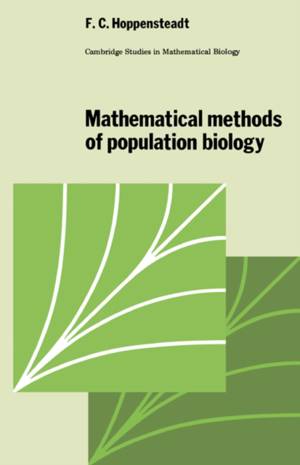
- Afhalen na 1 uur in een winkel met voorraad
- Gratis thuislevering in België vanaf € 30
- Ruim aanbod met 7 miljoen producten
- Afhalen na 1 uur in een winkel met voorraad
- Gratis thuislevering in België vanaf € 30
- Ruim aanbod met 7 miljoen producten
Zoeken
€ 56,45
+ 112 punten
Omschrijving
This introduction to mathematical methods that are useful for studying population phenomena is intended for advanced undergraduate and graduate students, and will be accessible to scientists who do not have a strong mathematics background. The material is graded in mathematical difficulty. The earlier parts of the book involve elementary diference equations while later chapters present topics that require more mathematical preparation. Models of total population and population age structure are first derived and studied, and then models of random population events are presented in terms of Markov chains. The last two chapters deal with mathematical methods used to uncover qualitative behaviour of more complicated difference equations. Each chapter begins with a simple model, usually of some historical interest, that defines the primary goals of the chapter. Exercises, for which solutions are provided, illustrate material in the text and also deal with models more advanced than those derived and studied in the text.
Specificaties
Betrokkenen
- Auteur(s):
- Uitgeverij:
Inhoud
- Aantal bladzijden:
- 160
- Taal:
- Engels
- Reeks:
- Reeksnummer:
- nr. 4
Eigenschappen
- Productcode (EAN):
- 9780521282567
- Verschijningsdatum:
- 26/02/1982
- Uitvoering:
- Paperback
- Formaat:
- Trade paperback (VS)
- Afmetingen:
- 140 mm x 216 mm
- Gewicht:
- 208 g

Alleen bij Standaard Boekhandel
+ 112 punten op je klantenkaart van Standaard Boekhandel
Beoordelingen
We publiceren alleen reviews die voldoen aan de voorwaarden voor reviews. Bekijk onze voorwaarden voor reviews.











